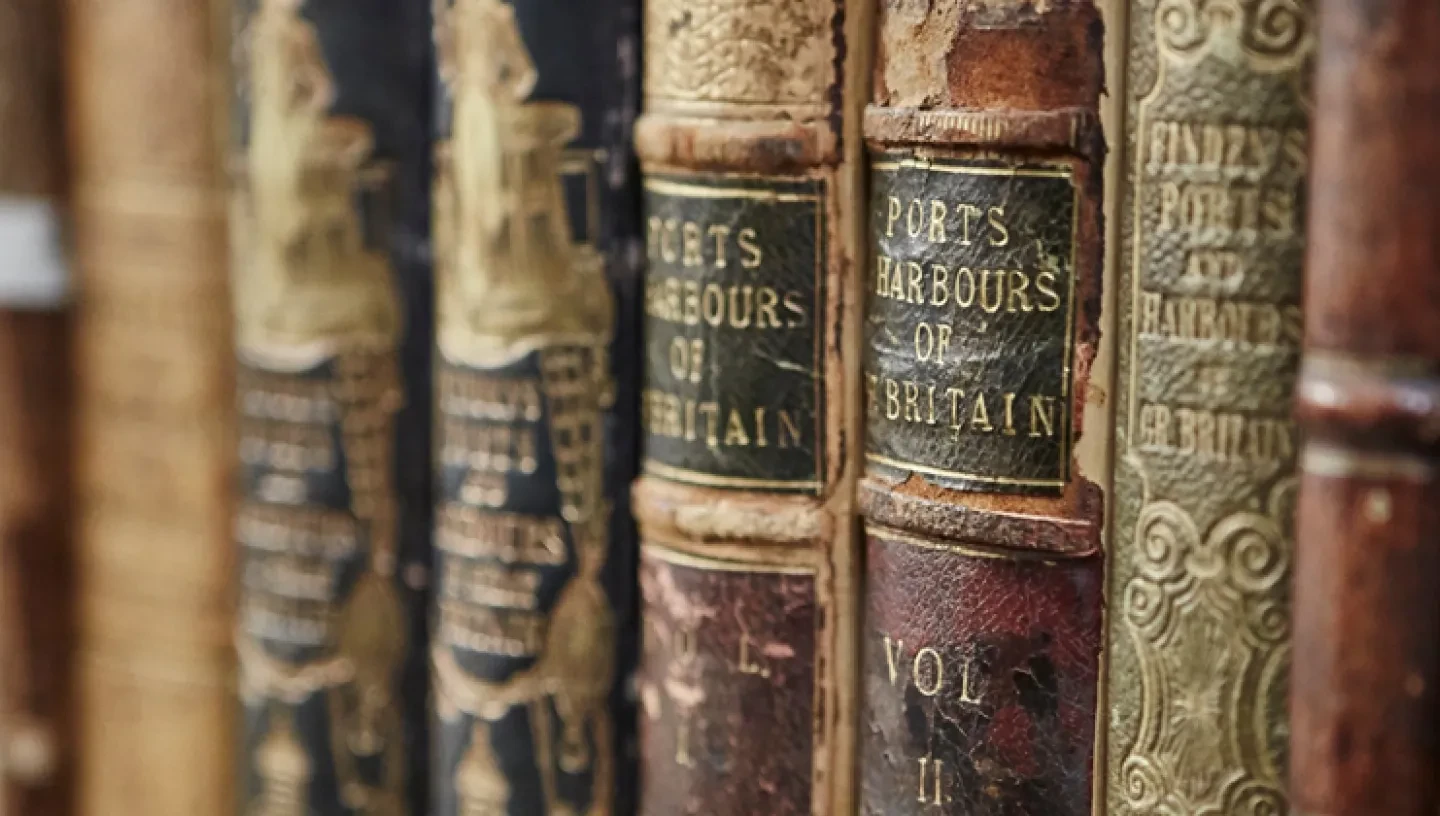
The official place of deposit for records of the Royal Navy is The National Archives at Kew. However, the Archive and Library has many complementary resources which will assist in researching the history, service and crew of Royal Naval ships.
The holdings of the Archive and Library are extremely rich in items on individual ships and actions and it is strongly recommended to search our online catalogues for references to vessels of interest to your research. However, the following are amongst the most useful and comprehensive reference works to act as a starting point, and are all available on open access in the Reading Room:
- Colledge, J.J., Ships of the Royal Navy: an historical index (2 vols)
- Clowes, William Laird, The Royal Navy : a history from the earliest times to the death of Queen Victoria (7 vols.)
- Lenton, H.T., British and empire warships of the Second World War
- Lyon, David, The sailing Navy list: all the ships of the Royal Navy built, purchased and captured: 1688-1860
- Lyon, David, The sail and steam navy list:; all the ships of the Royal Navy 1815 – 1889
- Winfield, Rif, British warships in the age of sail, 1603-1714 : design, construction, careers and fates
- Winfield, Rif, British Warships in the age of sail, 1714-1792 : design, construction, careers and fates
- Winfield, Rif, British warships in the age of sail, 1793-1817 : design, construction, careers and fates
Ship lists and movements
Steel's Navy List 1782–1816
Steel’s Navy List provides basic information on Royal Naval vessels, their commanders and their station. It also covers Royal Navy shore establishments, and later issues list French, Spanish and American ships taken during the Napoleonic Wars, and British ships lost, captured or destroyed. Published monthly for much of its history, the Caird Library has almost complete holdings.
Navy List 1814-present
The Admiralty began to publish the official Navy List was following the model of Steel’s Navy List, which soon ceased publication. While the content varies across its publishing history, the Navy List shows all Royal Navy ships and establishments, coastguard vessels, hired vessels and packet ships. It indicates their commander and later issues show all officers, as well as providing information on pay and regulations.
Warship histories
A microfiche compiled by museum staff, alphabetically listing all British warships, c.1650–1950. Entries include launch dates, size, number of men and guns, and brief outlines of ship careers, with commanders.
Admiralty movement books
Photographic copies of official manuscript records, these cover movements of Royal Navy ships (also vessels of the Royal Australian, Canadian and Indian Navies) during World War II. They include vessels on government service down to trawlers but not landing craft, hired vessels or troopships. The books are in two sequences arranged alphabetically by name of ship: one for surviving vessels, another for those sunk. While details vary, they include sailings, convoy numbers, repairs, and incidents such as crews rescued from torpedoed vessels.
20th-century warship histories
Photocopies of an unpublished typescript compiled by the Naval Historical Branch, of the Ministry of Defence, giving service summaries for 20th century Royal Naval vessels. A very useful resource, it should be born in mind that the length of entries varies considerably and the coverage is not comprehensive, but is biased towards more significant vessels, and particularly those serving in World War 2.
Royal Navy Lieutenants' logbooks
Lieutenants' logbooks, 1673–1809, totalling 5205 volumes. Although this is a very full series of records it is not always certain a log exists for a particular ship's commission. A detailed index of logs by ship is available in the Reading Room or from Archive staff.
Lieutenants' logs record weather, navigation and ship routines, as well as incidents occurring during a ship's commission. The logs may record loss or damage to stores, and disciplinary action. Lieutenant’s logs were bound into volumes at the Navy Office. All Captains' and Masters' logs are held by The National Archives at Kew.
Next steps
Other guides in the series which may be useful for researching the Royal Navy:
-
Research guide B1: The Royal Navy: Tracing people
For general research help see:
-
Research guide A2: Principal records for maritime research at the National Maritime Museum
-
Research guide A3: Tracing family history from maritime records
Although care has been taken in preparing the information contained in this document, anyone using it shall be deemed to indemnify the National Maritime Museum from any and all injury or damage arising from such use.